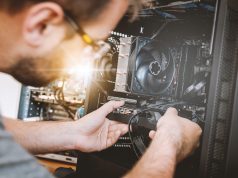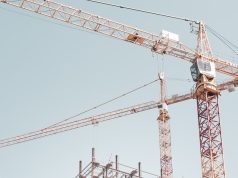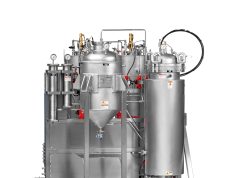Technology has consistently played a huge part in the progression of production across every sector. From creating a secure storage space in ‘the cloud’ to the rise of electric vehicles meaning less carbon being emitted into our atmosphere, every sector is using these advances to provide a better product. But how are such technological advances increasing our buildings’ safety? Let’s take a look at three key advances.
Ventilation
It’s important that your building has a significant ventilation system. The process of ventilation allows contaminated indoor air to be replaced with air from outside the building. These systems help provide a comfortable microclimate and offers a process to provide fresh air for occupants of the building while also reducing pollutants and providing cooling when necessary. It can also protect the building and elements against moisture. Without ventilation, or with limited ventilation, occupants’ health and comfort could be at risk.
The world’s first large-scale mechanical ventilation system dates back to 1854. Since then, the concept and methods have greatly evolved — especially in the last 40-50 years. While natural ventilation is simply when air moves in and out through windows, doors, vents, and other openings, mechanical ventilation is the use of mechanical air systems and is coming on leaps on bounds as technology improves. Also known as HVAC (heating, ventilation, and air conditioning) systems, this is now what most commercial buildings use. It is more controllable and responsive than natural ventilation which means the building can benefit from more adequate indoor air quality.
Rainscreen systems
Nowadays, rainscreen cladding can be hook on, face fix, secret fix or whatever is required. Rainscreen cladding is a system which consists of an outer weather-resistant skin fixed to a primary structure using adjustable brackets. You can use it for the following:
- Wall cladding and facade finishes
- Spandrel panels
- Facias and soffits
- Column covers
- Balcony and canopy cladding
- Tunnel linings
- Stairways and lifts
- Roof edgings and parapet wall copings
This type of cladding can be a cost-effective way to improve a building’s aesthetics and thermal performance. It can also help protect the structure of a building.
Sotech, a North-East-based company specialising in rainscreen cladding, have recently released an evolution of their original hook on secret fix rainscreen solution. “The industry has evolved a lot over the past three years”, said Charlie McLaughlin, Specification Manager at Sotech. “It’s important the people who eventually use the buildings understand that we not only provide fire-tested systems but that we provide high quality systems at the right price and in the right timeframe.
“The introduction of the slide and lock adjustment mechanism has given the original FC hook on system an incredible time-saving benefit and it reflects Sotech’s unwavering commitment to safety, performance and efficiency. We’re really pleased with the turn out of the new FC+ system and look forward to seeing it on buildings this year. Customers still have the option to order pre-assembled rails.”
Crime Prevention Through Environmental Design
Of course, the main advance has come in the design of buildings itself. The question is posed whether beautiful buildings be strong too? Simply put, yes. While designs continue to push the boundaries, they are always looking to become safer as well as more aesthetically pleasing.
Crime Prevention Through Environmental Design (CPTED) is a method which is often used in security planning. It focuses on design, placement, how a building is used as a means to increase security in an aesthetically pleasing manner.
As technology continues to progress, many new aspects will help improve security. What will the future hold?










